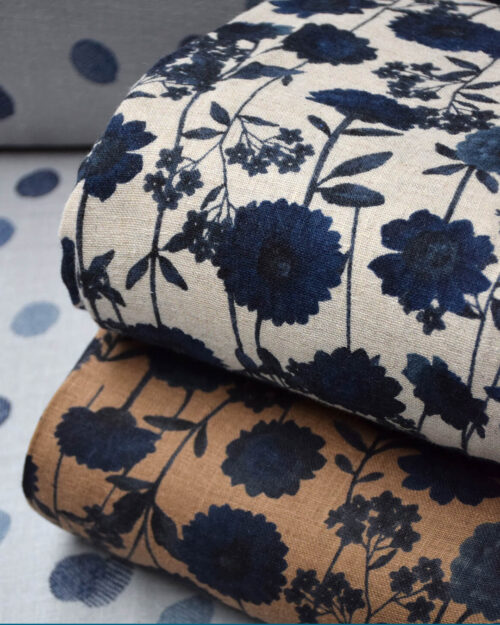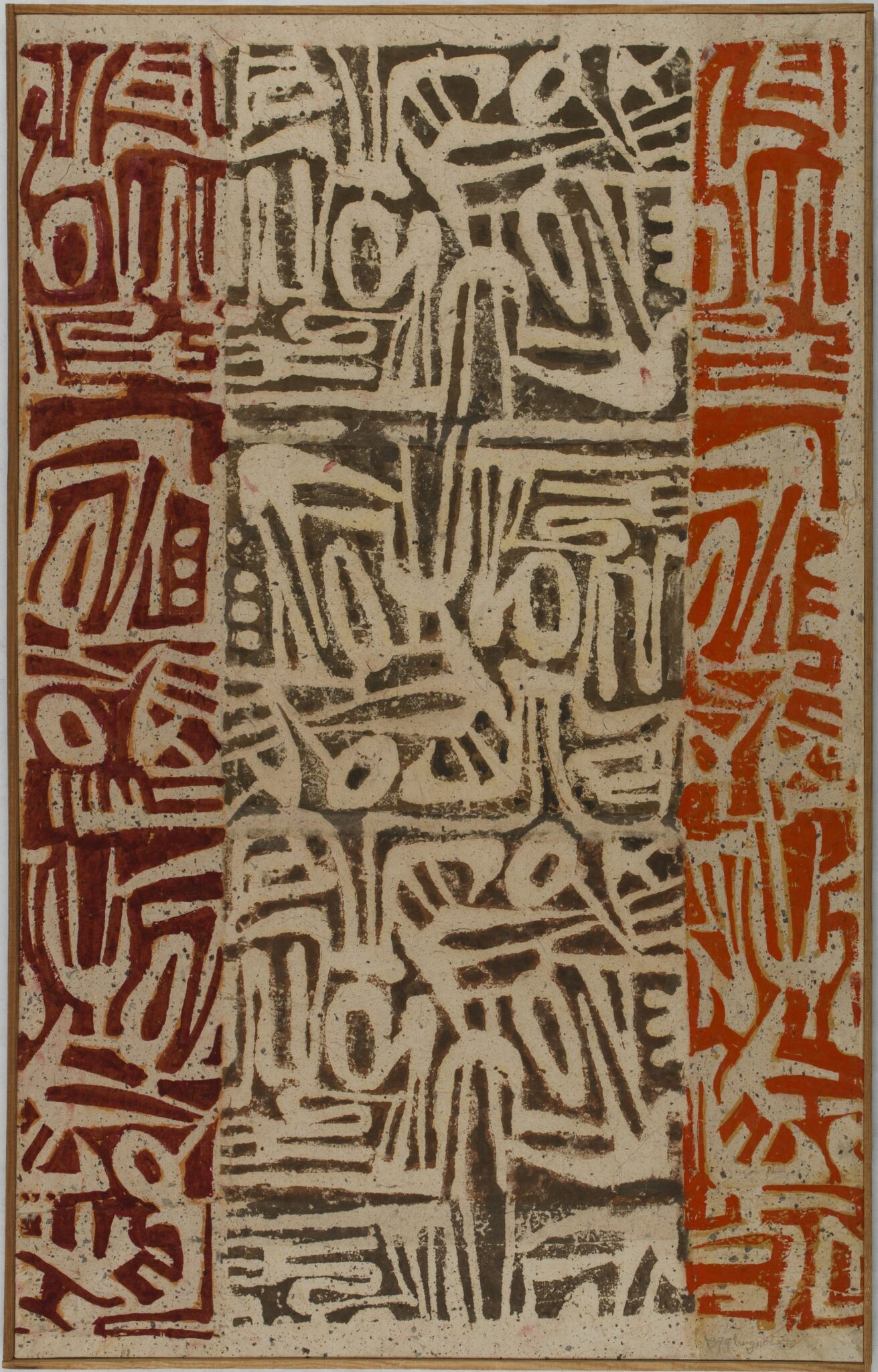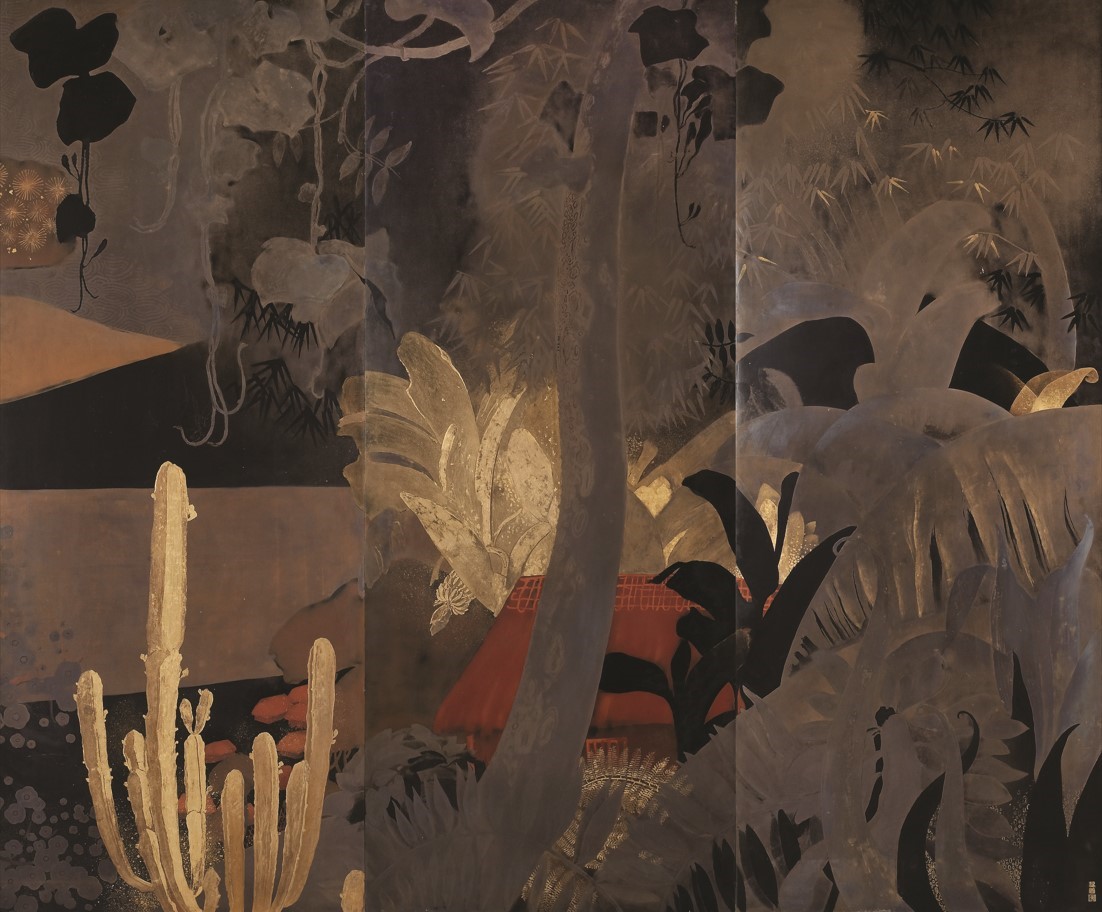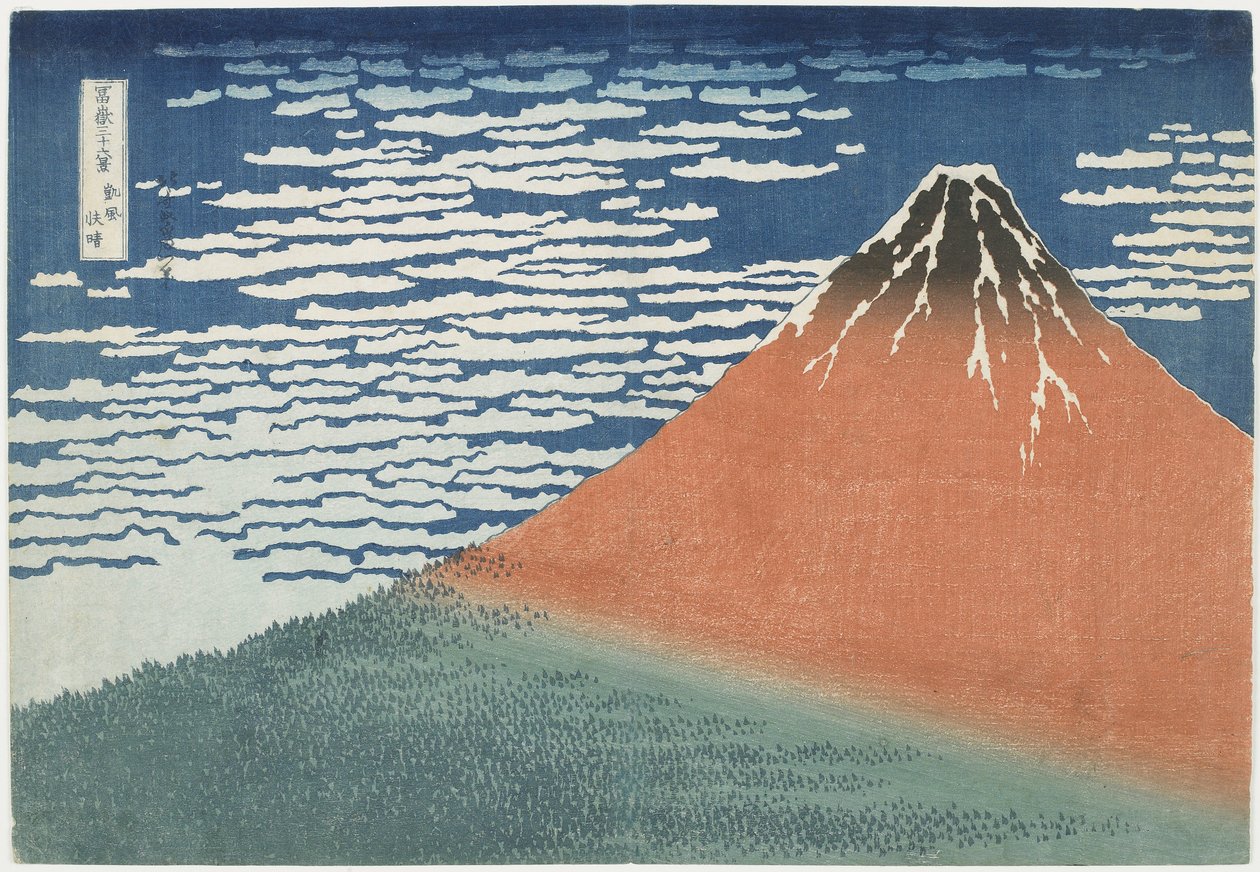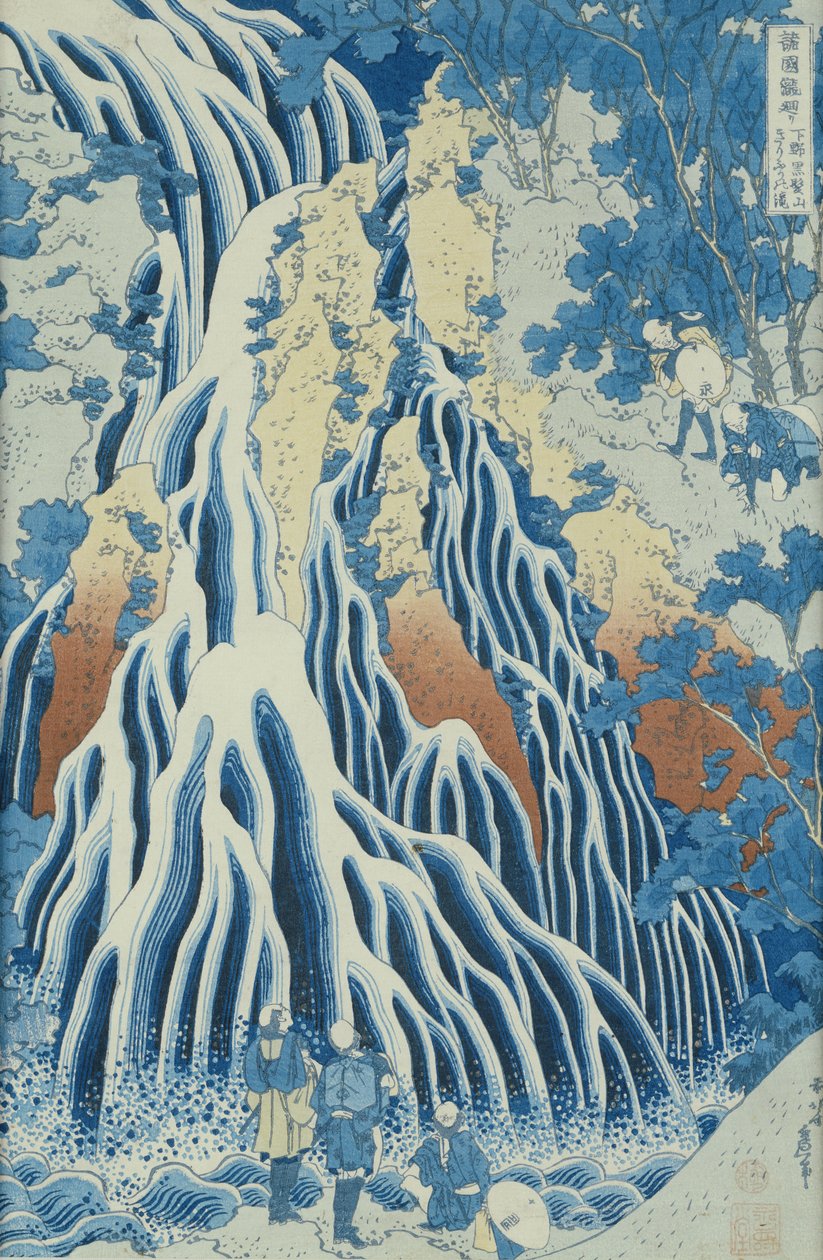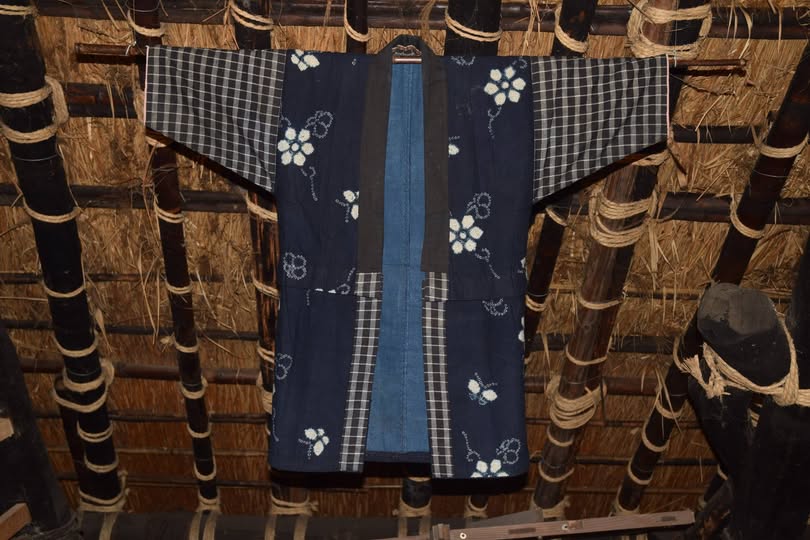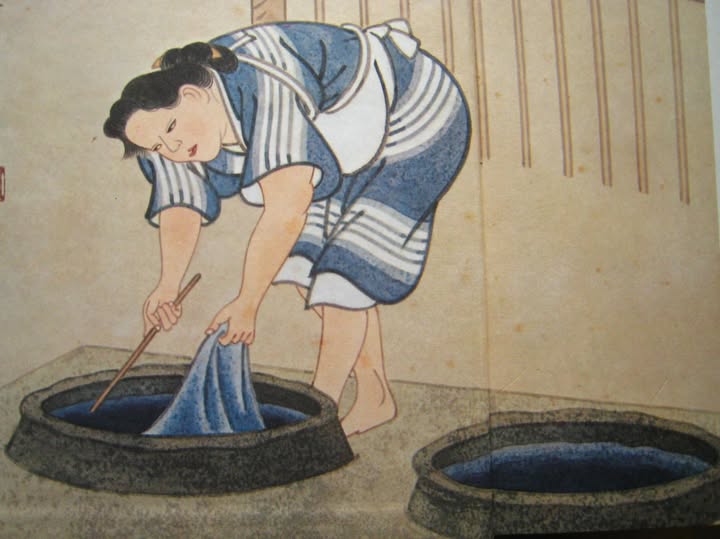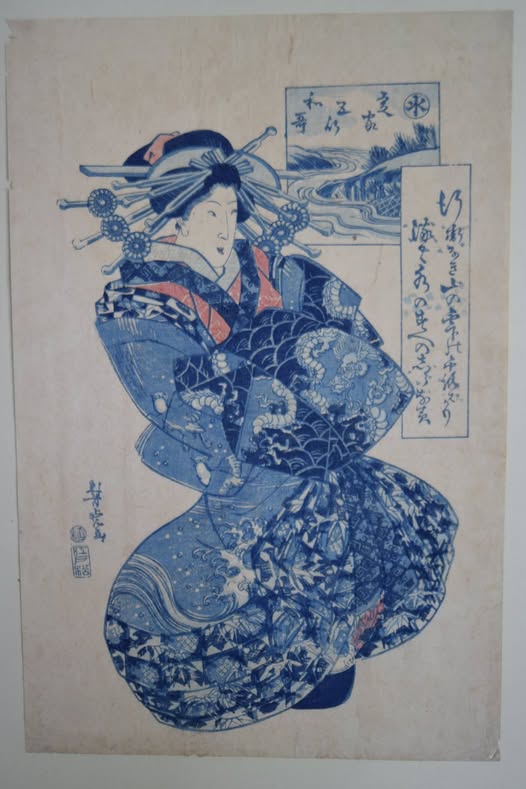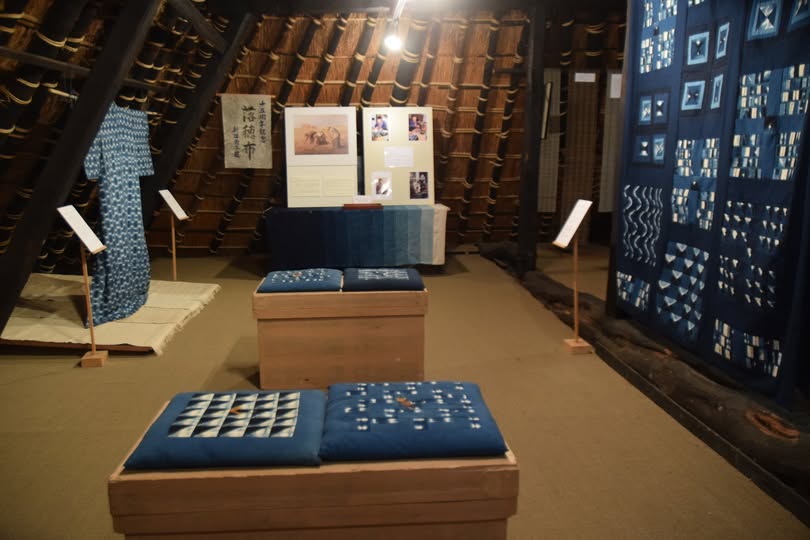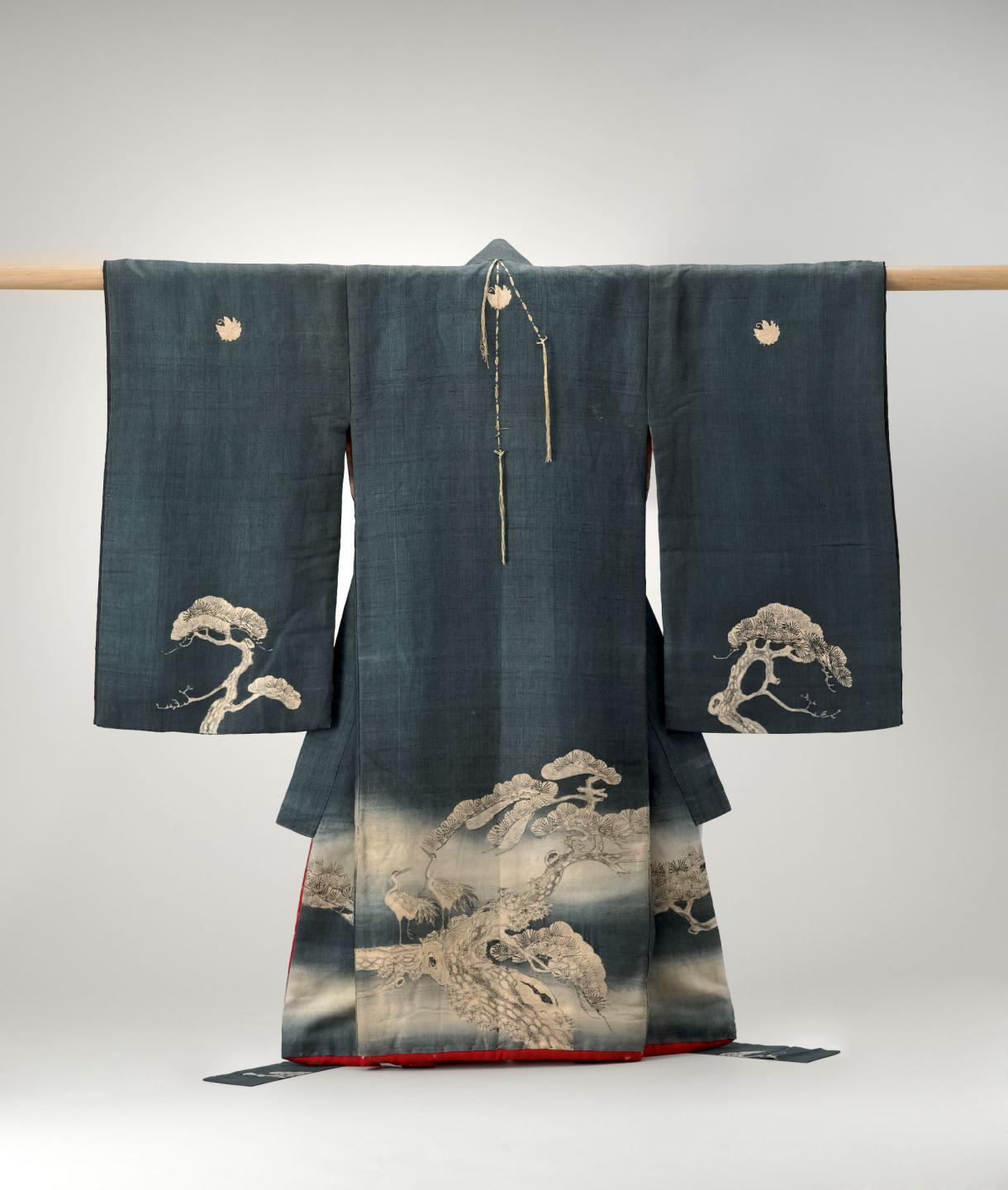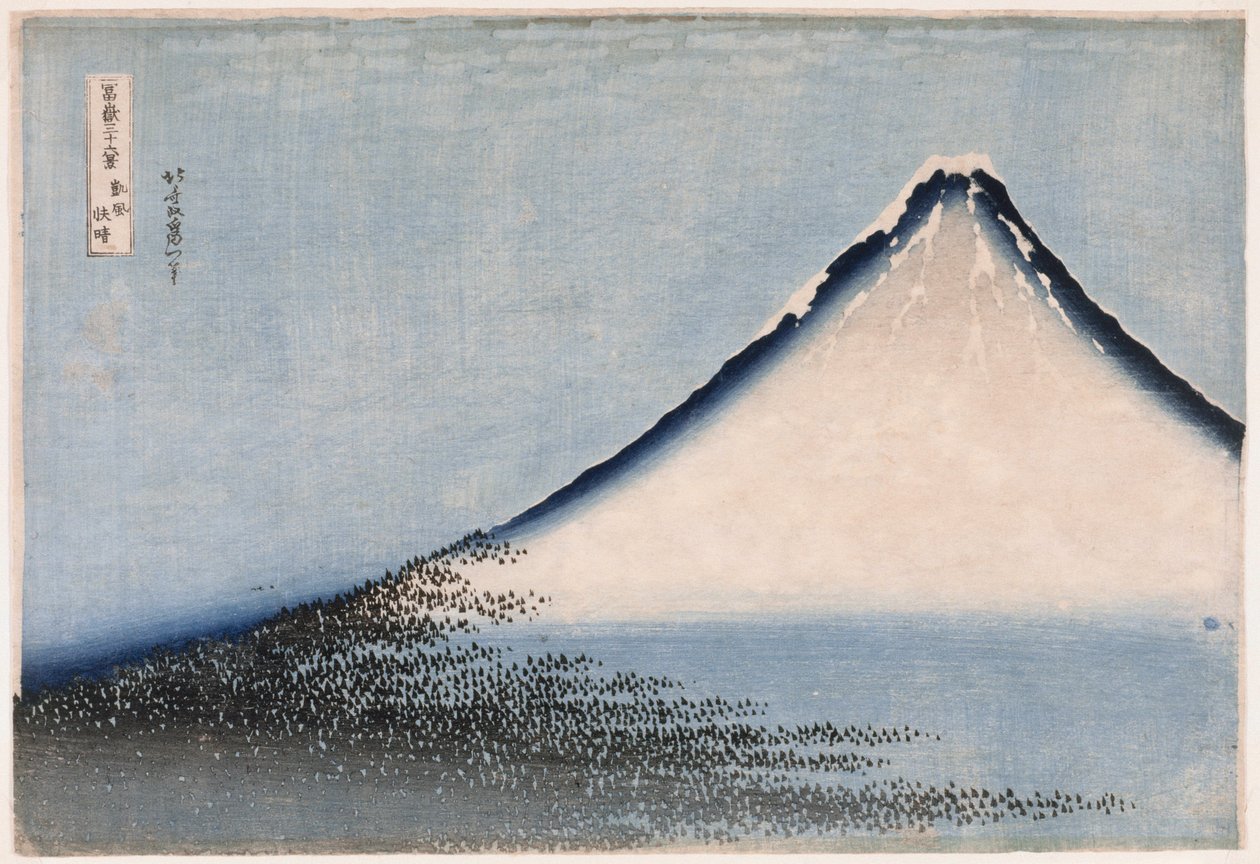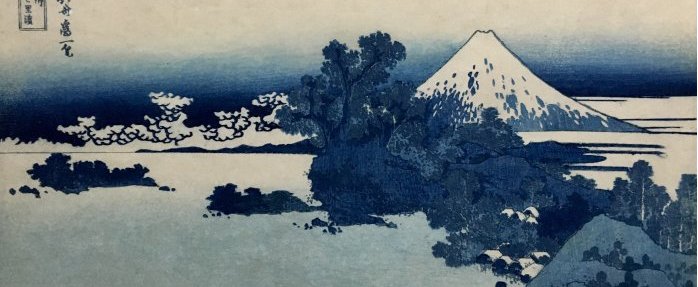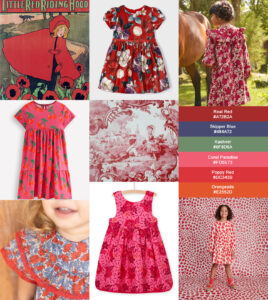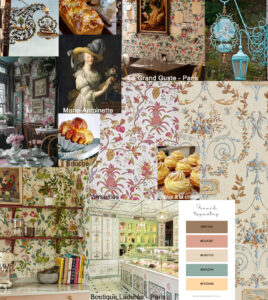#AprilChallengeByAndrea – Week 3
Your client
You work for a high-end hotel chain*. Their bed linens are plain, like most hotels, but in a dark navy blue. The style is elegant, clean and rather masculine. The exact shade is as shown in the attached palette (#05244C). They need new matching curtains and bedspreads in cobalt/indigo tones to complement the decor.
The pattern they need will be printed on linen, a noble and natural material, which adapts to ethnic, authentic and sober atmospheres.
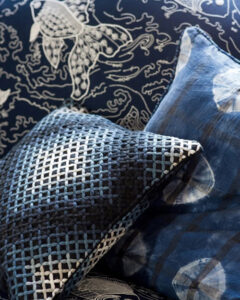
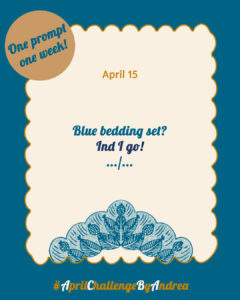
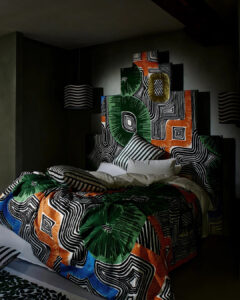
*Any resemblance to persons living or having lived is purely coincidental and unintentional.
The moodboard
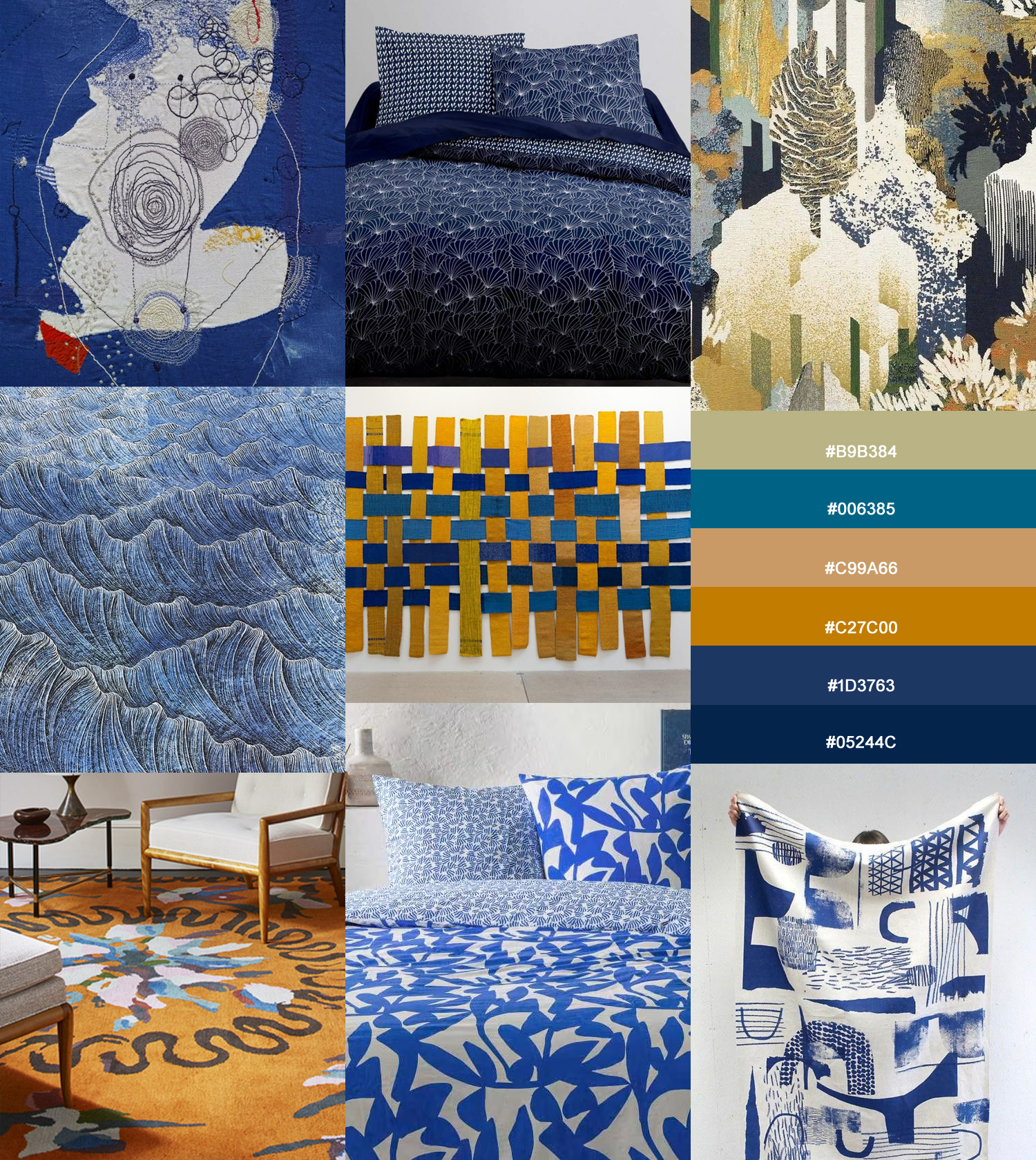
The palette and moodboard I provide here are personal combinations I created for #AprilChallengeByAndrea (Week 3 – Abstract blue bedding), the pattern challenge I promoted on Instagram. The color palette and hex color codes are inspired and match the moodboard (Photo credits below).
Your mission
Create a abstract pattern with a Japanese vibe that will stand the test of time, which will work equally well on a bedding set or curtains.
My suggestion: Be inspired by the use of blue indigo dye on Japanese textiles, boro, sashiko, shibori…
* Explore and take inspiration from contemporary art as much as from ancient and traditional history (boro, sashiko, shibori…>see below). Explore abstraction and geometry! Explore collage, draw, cut, glue…
* You can stay rather realistic or use organic shapes. If you take Hokusai’s print of Mount Fuji as an example, you see that the shapes are extremely simplified, close to a very contemporary abstraction.
* Use contrasts ranging from orange to beige.
* Pay attention to your client’s values: timeless elegance, a touch of masculinity, discreet luxury, for travelers from all over the world…
***
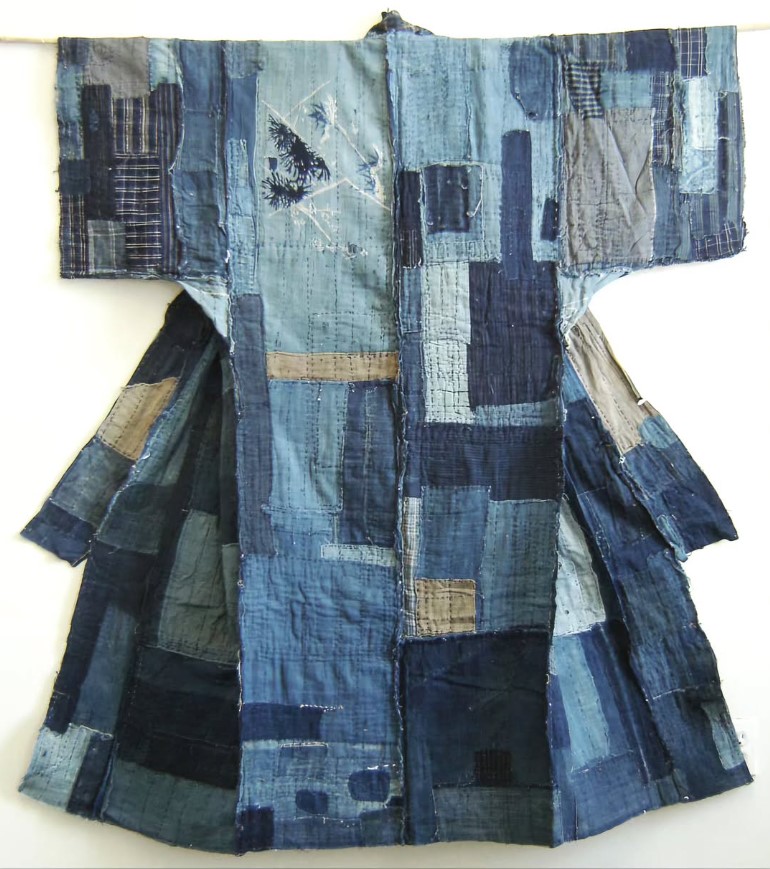
青い Blue and Japanese textiles
* Boro and sashiko. What is Boro ? In Japanese, Boro means rag. The poor population of northern Japan collected used textiles, patched them together, creating a patchwork (modest art). Sashiko is an embroidery technique used to assemble and decorate patchwork pieces, traditionally small white embroidery stitches on an indigo blue background. The motifs depicted had an aesthetic and symbolic function. Once reserved for the aristocracy, indigo-dyed fabrics have become more democratic and, thanks to boro, have become symbols of “modest art.”
* Shibori is an ancient dyeing process originating in Japan. It roughly corresponds to what we might call “tie-dye” (and there are several techniques to create varied patterns and subtle nuances).
***
Indigo is one of the oldest textile dyes.
Indigo dyeing has been used in many civilizations. It comes from the indigo plant, a plant native to India. The chemical industry supplanted natural indigo in the late 19th century. But indigo remains one of the rare natural dyes still used today. This produces a navy blue called Japanese blue, slightly different from the indigo shade itself, which tends towards purple. Indigo dyeing (with fermentation) imparted repellent and antiseptic properties to fabrics (useful for samurai costumes, for example). It’s the color of work clothes, jeans…
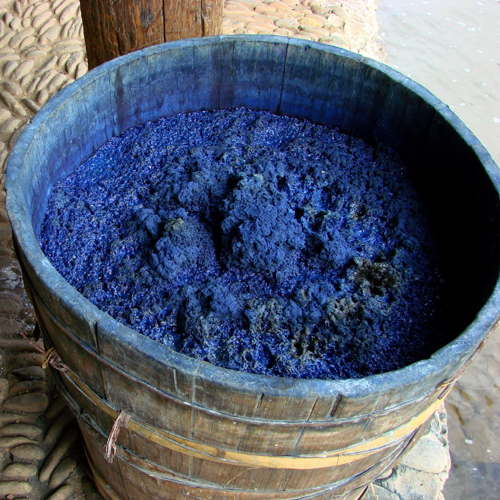
***
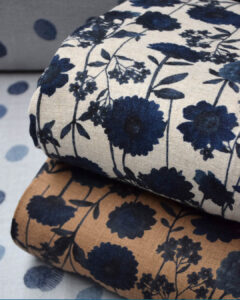
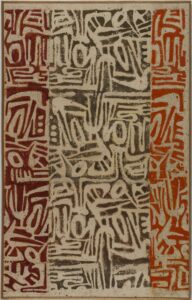
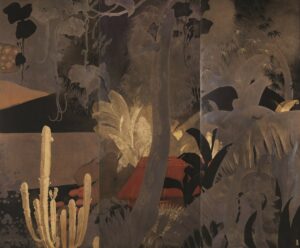
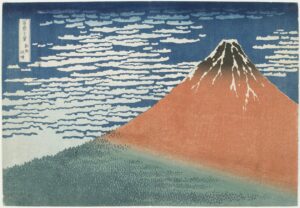
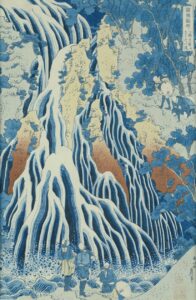
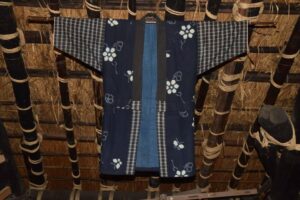
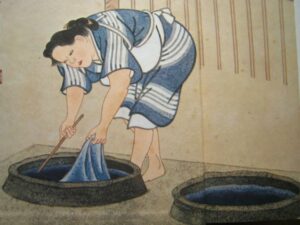
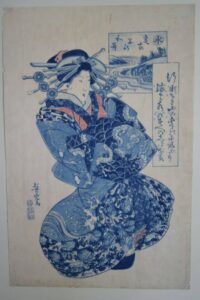
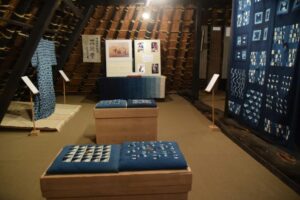
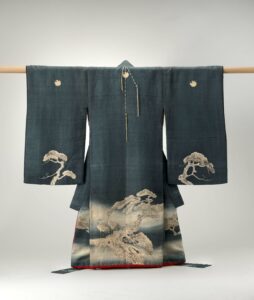
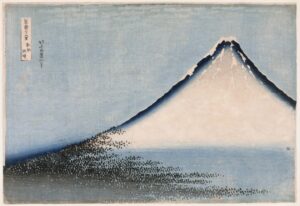
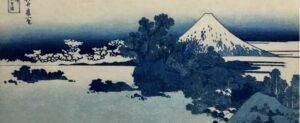
Tips & links
* It’s even better if the pattern has no up and down and can be enjoyed from all directions!
* Consider creating a second simple repeating pattern, which can be used as a lining or on the back of cushions, for example.
* See more images with Pinterest search: Boro (Link1), Sashiko (Link2), blue japanese textiles patterns (Link3)
* Article (Link) about Japanese boro textiles [tell histories of labor and love through patchwork].
* Another interesting article on boro on Japanobjects.com (Link)
*Follow @srithreads on Instagram for more boro textiles pictures and indigo dyed fabrics.
In 2020, PANTONE named Classic Blue (LINK) its Color of the Year. “A calm and confident shade of blue, elegant in its simplicity. Gender-neutral in its universality and seasonal in its timelessness, this firmly anchored hue allows for color combinations across the spectrum, yet stands alone. Representing its heritage yet resolutely contemporary, the versatile PANTONE 19-4052 Classic Blue takes on different appearances when applied to various materials, finishes, and textures, from shimmering metallics and high-tech materials to artisanal blends and the most delicate fabrics.” Here is a definition that corresponds to what we are going to create!
Boro Textiles: Sustainable Aesthetics by Japan Society NYC
*Credits:
Junko Oki, Japanese textile artist; Merlin Fabric Lelièvre Paris; LEE HYUN JOUNG, Silence 2022; rug Chistian Berard; Blanket Laura Slater; Kokka fabric, Bedding sets: Pierre Frey, Today, Kiabi, Christian Lacroix; Sheila Hicks, Interchangeable warp and weft; Lê Phô, Tonkin Landscape – Hanoi, between 1932 and 1934 (Vietnamese artist) Cernuschi Museum (Link); Lee, Ung-no, Composition (구성) 1974 (Korean artist) Cernuschi Museum (Link) ; Kirifuri Falls on Mount Kurokami, Blue Fuji, Beach of Shichirigahama by Hokusai; Kimono, Tohoku district of Japan,19th century, Nishikie Yoshitora Edo-era 18C Japan; Ceremonial kimono for young boys “iwaaigi” Guimet Museum (Link); Patchwork Elizabeth Michellod-Dutheil.
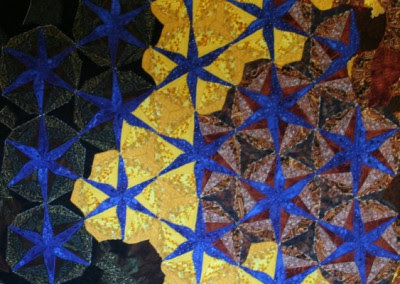
Pattern 3 – Abstract blue bedding –
How to join (on Instagram):
- Create a trendy pattern
- Share your pattern using the hashtag #AprilChallengeByAndrea
- Tag me in your posts & stories @andrealeonelli_illustrations
so I can see your creations and share them in my stories - Send me the ID number of your pattern once available on Spoonflower
so I can collect them in a special collection
